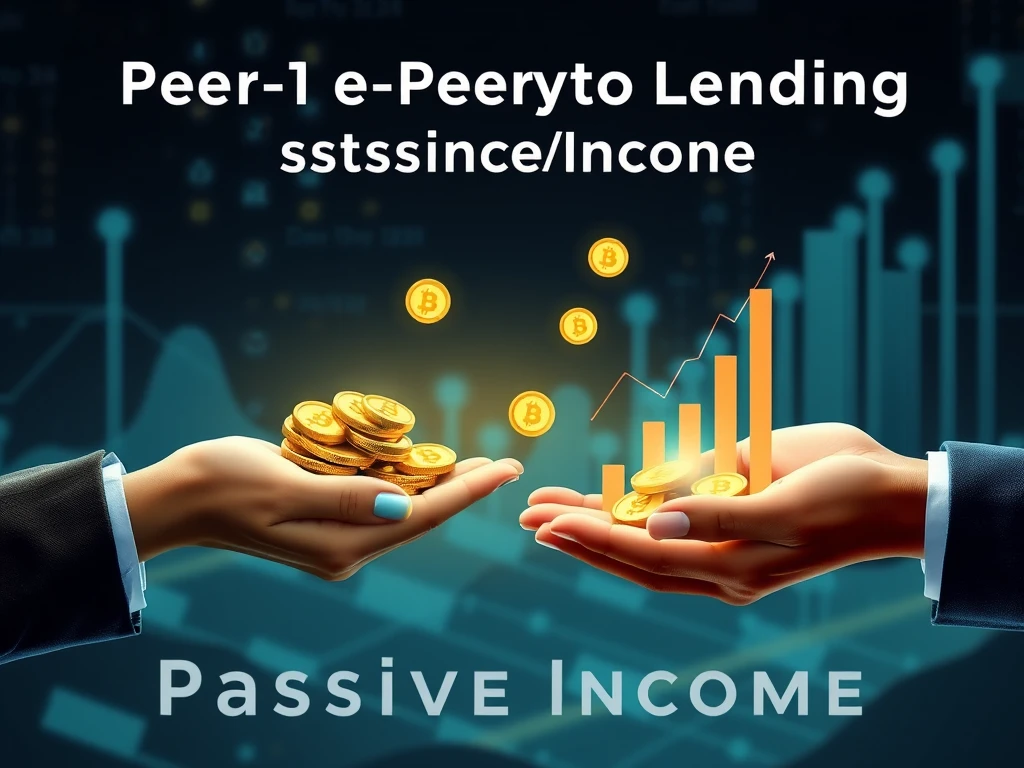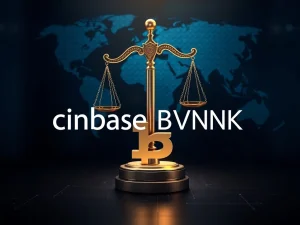Unlock Passive Income: How to Earn Interest with Peer-to-Peer Crypto Lending

Are you holding cryptocurrencies and looking for ways to make them work for you? Earning passive income with crypto has become a popular goal for many digital asset holders. One effective strategy gaining traction is peer-to-peer crypto lending.
Instead of letting your digital assets sit idle, you can lend them out to borrowers and earn interest. This guide explores how you can use peer-to-peer crypto lending to generate returns, covering everything from how it works to choosing the right platforms and managing risks.
What is Peer-to-Peer Crypto Lending?
Peer-to-peer crypto lending connects individuals who want to lend their digital assets directly with those who want to borrow them. This system bypasses traditional financial institutions, creating a more direct relationship between lenders and borrowers within the crypto ecosystem.
Lenders earn interest on their crypto holdings, while borrowers gain access to liquidity without needing to sell their assets. This provides an alternative path to generating passive income and accessing funds in the crypto market.
Many decentralized lending systems use liquidity pools. These pools are reserves of digital assets supplied by lenders via smart contracts. Borrowers access funds from the pool, and interest rates adjust based on supply and demand. High borrowing demand for an asset like Ether (ETH) increases the interest rate to attract more lenders. If demand drops or liquidity rises, the rate decreases. This dynamic pricing creates a self-balancing system.
How Does P2P Crypto Lending Work?
While sharing similarities with traditional lending, crypto P2P lending has unique characteristics:
- Crypto-based loans: Loans use cryptocurrencies like ETH, Bitcoin (BTC), or stablecoins such as USDC. Borrowers often use these loans to get liquidity without selling their crypto, potentially avoiding taxable events or maintaining long-term positions.
- Smart contract enforcement: Smart contracts handle the entire process, from setting terms and holding collateral to calculating interest and repayments. These programmatic contracts execute agreements automatically without third-party oversight.
- Collateralization: Borrowers usually provide crypto assets as collateral. This collateral is often overcollateralized in crypto markets to protect the lender. For instance, borrowing $500 might require locking $1,000 worth of ETH.
- No traditional credit checks: In DeFi lending, smart contracts do not assess credit scores or identity. This makes crypto lending more accessible but increases risk for lenders if borrowers default or collateral value drops significantly. CeFi platforms may still require KYC checks.
- Direct wallet transfers: Once approved and collateral is locked, funds go directly to the borrower’s crypto wallet. Repayments and interest return to the lending pool or the lender.
Did you know? BTCJam, launched in 2012, was the first P2P lending platform using only Bitcoin. Despite attracting investment, it closed in 2017 due to regulatory challenges.
CeFi vs DeFi: Choosing Your Crypto Lending Platform
The crypto lending space is split between centralized (CeFi) and decentralized (DeFi) platforms. Understanding their differences is key when selecting a crypto lending platform.
DeFi Lending Platforms
- Non-custodial, trustless systems on blockchains.
- Governance often by community/DAO.
- Operations executed via transparent smart contracts.
- Examples: Aave, Compound, Morpho.
- Pros: Permissionless, transparent, yield farming incentives, non-custodial control.
- Cons: Requires technical understanding, limited customer support, smart contract risks.
CeFi Lending Platforms
- Operated by private companies.
- Often replicate traditional finance user experience.
- Manage custody and compliance.
- Often offer fixed interest rates.
- Examples: Binance Loans, Wirex, Crypto.com.
- Pros: Easier onboarding, customer support, beginner-friendly interfaces.
- Cons: Requires trust in a central entity, subject to regulations, custody risks like asset freezes.
Factors for Choosing a Crypto Lending Platform
Selecting the right crypto lending platform is crucial for successful passive income generation. Consider these factors:
- Security: Prioritize platforms with strong security. Look for cold storage, smart contract audits (for DeFi), insurance (if available), and 2FA/withdrawal whitelisting (for CeFi).
- Interest Rates: Rates vary by platform and asset. Stablecoins might yield 2%-6% APR, while BTC or ETH could also fetch 2%-6% APR, depending on market conditions. Rates on DeFi platforms like Compound adjust dynamically based on supply and demand. CeFi platforms often have fixed rates. Compare platforms to find competitive rates to earn interest on crypto.
- Loan Terms: Platforms offer open-term lending (withdraw anytime) or fixed-term lending (lock crypto for a set period for potentially higher yields). Choose terms that match your needs.
- User Experience: An intuitive interface makes lending easier. Look for clear dashboards, easy KYC (CeFi), and responsive customer support. Beginners might prefer CeFi platforms for their simpler UX.
Risks and Rewards of Passive Income with Crypto Lending
Earning passive income with crypto through lending offers benefits but also carries risks. Understanding both is vital.
Rewards:
- Earn passive income: Generate yield by depositing idle crypto.
- Compound growth: Reinvested interest can boost long-term returns.
- Portfolio diversification: Adds an income stream beyond trading. Lending stablecoins can protect capital in bear markets while earning yield.
Risks:
- Market volatility: Sharp price drops can lead to liquidations or collateral shortfalls.
- Platform risk: Centralized platforms can fail. DeFi protocols face smart contract bugs that could risk funds.
- Regulatory changes: Governments may regulate lending platforms, potentially leading to freezes or platform exits.
Did you know? In August 2024, Ethereum-based lending markets saw $436 million in liquidations, largely driven by an ETH price drop, showing the volatility risk in DeFi lending.
Maximizing Passive Income with Crypto Lending
To improve your crypto lending strategy and maximize returns:
- Diversify: Spread funds across platforms and assets (stablecoins, volatile assets) to balance yield and risk.
- Mix Terms: Combine short-term flexibility with potential higher yields from long-term commitments.
- Monitor: Keep track of interest rates, platform updates, and market conditions. Rates change, and new opportunities arise.
- Review Safety: Regularly check platform security features, audits, insurance, and cold storage practices.
- Stay Informed: Follow crypto news on regulations. Platforms might freeze withdrawals or leave regions due to compliance.
Lending conditions change quickly. Interest rates can fall, platforms might lose liquidity, or even shut down. Having an exit plan is crucial. Know how to withdraw assets, set personal yield targets, and have backup options if a platform faces issues. Exiting safely is as important as entering the market.
Conclusion
Peer-to-peer crypto lending offers a compelling way to earn interest on crypto holdings and generate passive income crypto. By understanding how the process works, evaluating different crypto lending platforms (CeFi vs. DeFi lending), and managing the inherent risks, you can make informed decisions to grow your digital assets. While opportunities exist, diligence and a clear strategy, including an exit plan, are essential for navigating this dynamic space successfully.
This article does not contain investment advice or recommendations. Every investment and trading move involves risk, and readers should conduct their own research when making a decision.







